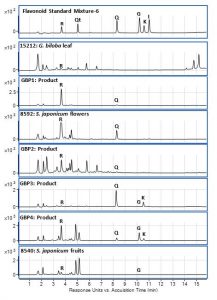Over 70% of the world population uses herbal medicines and product for healthy living. This rise in the use of herbal product has also given rise to various forms of abuse and adulteration of the products leading to consumers’ and manufacturers’ disappointment and in some instances fatal consequences.
Due to varied geographical locations where these plants grow, coupled with the problem of different vernacular names these plants are known by, a great deal of adulteration or substitution is encountered in the commercial markets. In addition, there have been number of reported studies that reveal adulteration of dietary supplements with undeclared synthetic drugs, which may potentially cause serious toxic adverse effects.
In the majority of reported cases of contamination, the contamination is likely unintentional or intentional. The contaminant exists within the product to an extent that could cause harm if consumed, the product is deemed adulterated. Following are the parameters responsible for adulteration or contamination:
- Name confusion, misidentification and mislabeling
- Lack of knowledge about the authentic plant
- Similarity in morphology and or aroma
- Environmental contamination with heavy metals (lead in motor exhaust)
- Insects feeding on the plant during the harvest
- Pesticides/Insecticides
- Microorganisms (bacteria, molds)
- Short supply/Non-availability of the authentic plant (expensive) (Economic adulteration)
- Synthetic or pharmaceuticals
- Addition of inert material to add fill weight (Maltodextrin, Extracted marc)
Hyphenated techniques like liquid chromatography-PDA-tandem mass spectrometry (LC-PDA-MS/MS), gas chromatography-tandem mass spectrometry (GC-MS/MS), thin layer chromatography (TLC/HPTLC with MS), SFC-PDA-MS has become possible to detect plant adulterants or synthetic drugs and their structural analogues as adulterants even if they are present in small quantities.
One example showing economic adulteration:
Reference: Avula, Bharathi; Sagi, Satyanarayanaraju; Gafner, Stefan; Upton, Roy; Wang, Yan-Hong; Wang, Mei; Khan, Ikhlas A. Identification of Ginkgo biloba supplements adulteration using high performance thin layer chromatography and ultra high performance liquid chromatography-diode array detector-quadrupole time of flight-mass spectrometry. Analytical and Bioanalytical Chemistry (2015), 407(25), 7733-7746

